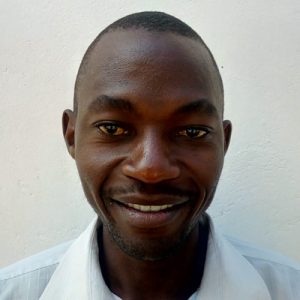Students carry water to school with their books, but it rarely lasts through lunchtime. There is no water at Eshikufu Primary School, and the students get thirsty. They must band together, grab their yellow jerrycans, and head off to a community spring to bring back water. Since the source is out in the village, students waste so much time between getting there and waiting in line behind the adults.
Pupils spend a lot of time looking for water, and the time that would have been invested in studying and getting better grades is wasted. Pupils are not socially active during the class breaks because instead, they have to go fetch water.
When carrying water from home, students arrive at school already tired.
Eshikufu Primary School was established in 2011 on a one-acre piece of land initially belonging to Mr. Khasolo. The main purpose for starting Eshikufu Primary School was to reduce the long distance and the risk encountered by children crossing the busy tarmac road and bridges to Enyapora Primary School. By 2012, it had an enrollment of 82 pupils with just one incomplete classroom for them all.
It has grown massively since 2012, with a current student enrollment of 856. They don't have enough desks for students, so many of them sit on the ground.
Students learn mathematics, English, Kiswahili, social studies, sciences, and religious education. There are lots of extracurricular activities like peace club, football, netball, scouting, debate, health club, and environment club.
The pupils arrive before 8am to clean the grounds and their classrooms. Classes begin at 8:20am. Class eight remains at the school during the lunch hour to be served by the cook, since they are preparing for high school entrance exams. The rest of the students must leave the school to get food from their parents or the local market.
What we can do:
Rainwater Catchment Tank
A rainwater catchment tank will help curb water scarcity here, enabling pupils to settle back into a steady class routine. This 50,000-liter tank will be used for drinking, cooking lunch for grade eight, handwashing, and cleaning the latrines and classrooms.
VIP Latrines
"The latrine condition is in a pathetic state. Our student numbers have increased but the latrines are not enough," reports Teacher Everline Ouma.
"There is a lot of competition at break time."
Two triple-door latrines will be constructed with local materials that the school will help gather. Three doors will serve the girls while the other three serve the boys. And with a new source of water on school grounds, students and staff will have enough to keep these new latrines clean.
Handwashing
Two handwashing stations will be delivered to the school, and the club will fill them with water on a daily basis and make sure there is always a cleaning agent such as soap or ash.
Training
Training will be held for two days. The facilitator will use PHAST (participatory hygiene and sanitation transformation), ABCD (asset-based community development), CTC (child to child), lectures, group discussions, and handouts to teach health topics and ways to promote good practices within the school. The CTC method will prepare students to lead other students into healthy habits, as well as kickstart a CTC club for the school. This CTC club will oversee the new facilities, such as handwashing stations, and make sure they are kept clean and in working condition. They will also be ambassadors for hygiene and sanitation among their peers at school and families at home.

 Rainwater Catchment
Rainwater Catchment
 Rehabilitation Project
Rehabilitation Project




































